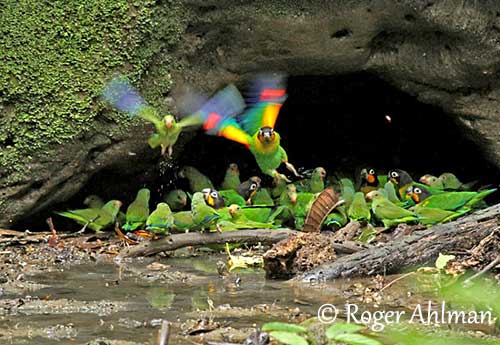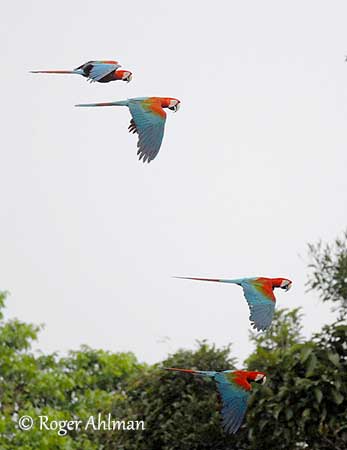
Text by Nicole Bouglouan
Photographers:
Roger Ahlman
Pbase Galleries Peru and Ecuador & My bird pictures on IBC
Otto Plantema
Trips around the world
Sources:
HANDBOOK OF THE BIRDS OF THE WORLD vol 4 by Josep del Hoyo-Andrew Elliott-Jordi Sargatal - Lynx Edicions - ISBN: 8487334229
PARROTS OF THE WORLD – An Identification Guide – by Joseph M. Forshaw – Princeton University Press – ISBN 0691092516
Smithsonian.com - Why Do Hundreds of Macaws Gather at These Peruvian Clay Banks?
The Official Nerd Bird - Why do Parrots Eat Clay?
Academia.edu - What are parrots that eat clay eating?
Cornell University - "Polly wants some poison": Detoxifying strategies of Amazon Macaws
James Gilardi - World Parrot Trust
Donald Brightsmith - Tambopata Research Center
Parrots and clay… an old story !
Parrots in the wild are like bright-coloured flowers among the green vegetation! They move in pairs, small groups or flocks, calling loudly and flying fast over treetops. They are sociable birds and numerous species gather at night at communal roosting sites. During the day, they forage for food, especially in the early morning and the late afternoon. They spend the hottest hours of the day resting together, performing mutual preening and calling.

Parrots are usually monogamous with strong pair-bonds that may last for life. Mates strengthen the bond all year round, feeding and roosting together, and sharing most things every day, involving simple courtship displays in already formed pairs. The male frequently feeds the female, and within a pair, the commonest activity is allopreening, often confined to head and neck, usually impossible to reach with the bill for the bird itself.
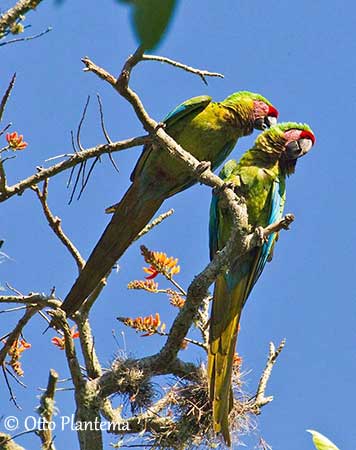
Parrots are amazing birds. They are beautiful, smart, happy, gregarious… and noisy! Unfortunately, they are loved by humans for that, whereas other part of the human population hates them for their negative impact on crops and cultures. And between these extremes, we can find the trappers who capture numerous parrots to supply the demand for living pets and cagebirds.
Parrots are trapped for trade. The adults are often killed to steal both eggs and chicks, and these stunning birds spend the rest of their life far from their native range, confined in cages, fed with bad food involving plumage loss, wounds and diseases.
Illegal parrot trade and habitat loss are the main causes of population decline.
Let them in the wild and enjoy the show!
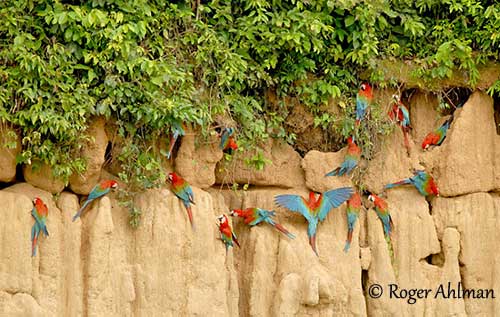
Parrots feed primarily on plant matter such as seeds, fruits and flowers. Their strongly curved bill allows them to get the high nutritional content of hard seeds and nuts, often with help of one foot. They also take unripe fruits that contain toxic alkaloid substances.
For this reason, numerous parrot species gather at exposed banks of clay within the forest, especially in South America in Peru and Ecuador. This behaviour is still poorly understood. However, some explanations were suggested by experts.
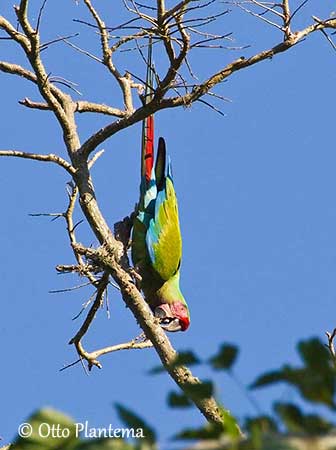
In 1996, James Gilardi of the World Parrot Trust used the word “geophagy” or the practice of eating earth-like substances, and especially clay.
As the parrots ingest a significant amount of poisonous or caustic plant matter, they need to neutralize their effect. Eating clay is a good way to separate the poisonous substances from the edible plant matter. They are often observed at “clay-licks” with great regularity and frequency.
This is currently the only and the best explanation about this behaviour, largely accepted as a scientific fact.
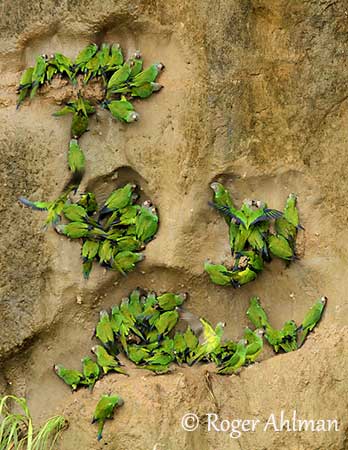
A more recent study conducted by Donald Brightsmith of the Tembopata Research Center in Peru, suggests that the clay eaten by parrots is not able to absorb the toxins, but rather because the soil was higher in sodium. This theory was supported by the fact that the clay-licks are very far from any oceanic influences, and give the birds some amount of sodium.
Other observations are based on the fact that alkaloids are stimulants. Researchers have noticed that the parrots arriving at clay-licks are in a very excited state. However, after eating clay, they appear much calmer.
Parrots and macaws frequent very regularly, sometimes daily, these sites, meaning that this practice is very important for the birds.
This behaviour is mainly observed in SE Peru and in N South America, but in other parts of their range, it is not observed in the same species.
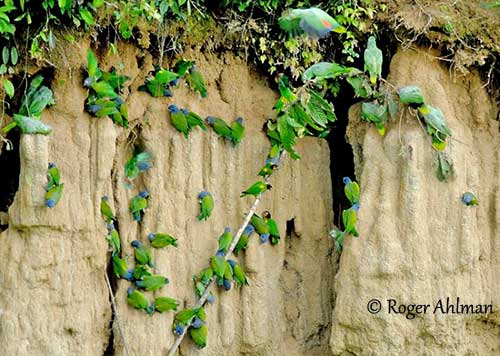
Several species including macaws, amazons, parakeets, parrotlets and other parrots come to these clay-licks every morning around dawn. Sometimes, hundreds at a time are perched against the cliff, creating a moving, bright-coloured wildlife spectacle.
The largest species, often macaws, are usually perched higher above the smaller ones, indicating that there is a hierarchy that manages this daily ritual.
Enjoy the show!
“We are just around dawn at river’s edge and the heat is not there yet. In the glowing sky of dawn, clouds of bright-coloured parrots cross the sky in an indescribable din. They come here to drink, but also to eat the clay on the overhanging cliffs. It is magic!”
From the witness of a friend, amazed by the show:
Paul Guillet: GALLERY
